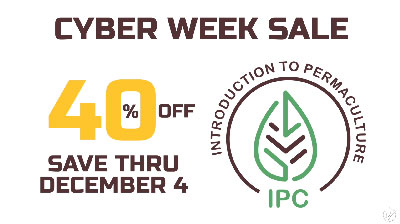“Dr. Elaine’s™ Soil Food Web Approach provides an effective and viable means of rapidly regenerating health and fertility in agricultural soils, enabling farmers to operate more productively and profitability without the use of chemical inputs, thus protecting the world’s waterways, insect and animal populations. Restoring the Soil Food Web in agricultural soils also promotes the capture and sequestration of substantial levels of carbon from the atmosphere by returning it to our soils, providing the potential, if implemented on a global scale, to reduce atmospheric carbon to safe levels as identified by the IPCC.”
Soil Food Web Foundation Courses
What's Included:
63 Lectures & Quizzes covering the science and theory behind the Soil Food Web Approach.
Foundation Course 1 - Introduction to the Soil Food Web
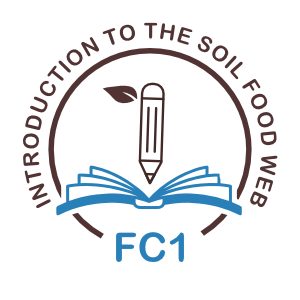
In Foundation Course 1 you will learn:
- About the damage that modern agriculture has done to soils all over the world.
- How Regenerative Agriculture is the soil-ution and how you can rapidly regenerate your soils with the Soil Food Web Approach.
- How the Soil Food Web Approach can be adopted on any scale and in almost any environment, with a multitude of crops.
- About the 4 major groups of Beneficial Microorganisms that are needed to restore ecosystem functions to your soil.
- How Beneficial Microbes work in harmony with your crops to nourish and protect them.
- How benefits such as increased yields, reduced erosion, reduced pest, disease and weed pressures etc. can be achieved.
- About several projects from around the world that Dr. Elaine Ingham has worked on personally.
- About some of the management practices you can adopt to ensure that the biology in your soils is not compromised.
- How soil structure is created by beneficial microbes, improving water infiltration in clay soils and better water retention in sandy soils. And how good structure enables plants and beneficial microbes to penetrate deep into the soil profile, improving plant health.
- How beneficial microbes access the abundance of nutrients stored in the parent material (think sand and clay particles) and how this is then made available to your plants.
- How plants influence the soil biome, by releasing sugary exudates that feed specific groups of beneficial microbes, in return for nutrients.
- How having a balanced soil biome can result in great benefits, such as Weed Suppression and Increased Carbon or Organic Matter content.
Foundation Course 2 - Making BioComplete™ Compost
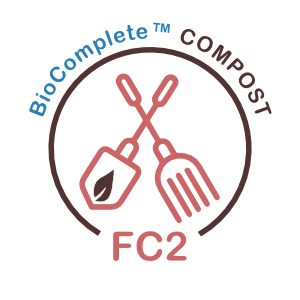
In Foundation Course 2 you will learn:
- About the different definitions of compost and why we consider it as a means of multiplying beneficial microbes instead of just a way of delivering nutrients to the soil.
- How to make your own Biological Compost, using Dr. Elaine’s close-control composting method that enables beneficial microbes to multiply rapidly, while suppressing detrimental microbes.
- Techniques that can be used to balance the biology in your compost, ensuring that the 4 main groups of microbes are present.
- How to apply Biological Compost to your soils so that beneficial microbes can interact with your plants in the root zone, offering nutrition and protection.
- About the various types of methods and equipment that can be used to produce Biological Compost, depending on scale. This includes vermicompost and hot-composting.
Foundation Course 3 - Making BioComplete™ Extracts & Teas
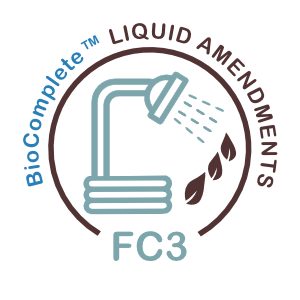
In Foundation Course 3 you will learn:
- How to produce Biological Extracts and Teas from your Biological Compost, using different types of equipment depending on the scale you are operating at.
- About the uses and application methods of Biological Extracts and Teas
- How to apply Biological Liquid Amendments to your soils using different equipment, depending on the scale of your project. And how you can use conventional spraying equipment with some minor modifications.
Foundation Course 4 - Microscopy
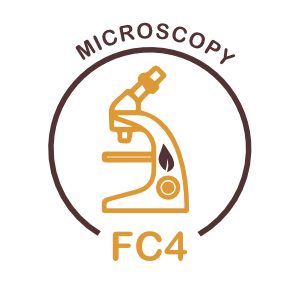
In Foundation Course 4 you will learn:
- How to correctly set-up and use a compound microscope.
- About the biological morphology of the 4 major groups of beneficial soil microorganisms.
- How to identify and quantify the key groups of beneficial microbes that all soils need in order to be fully functional, using the compound microscope. This will enable you to conduct your own soil biology assessments.
- How to process and interpret data.
- How to recognize microarthropods, algae, pollen and other objects in your soil.




Save 40 % OFF
Introduction to Permaculture
Graham is an internationally respected teacher, author and lecturer in Permaculture and other aligned disciplines over the last thirty years. He is the longest standing member of the UK Permaculture Association and Chair of the Educational Committee. He shares a home in the Scottish Borders with his wife Nancy, which boasts the longest-standing intentional food forest garden in Britain. Over a thousand visitors a year attest to the amazing productivity of this space.
What's Included:
Downloadable Course Materials
– 18 Lectures and Quizzes
– Downloadable Course Materials
– Certificate of Completion
– IPC Forum Access
What you’ll learn:
– 12 Principles of Permaculture
– Three ethics: Earth Care, People Care, Fair Shares
– Importance of Observation
– Design Sequences
– Why do trees matter and how do they work?
– The Answer Lies in the Soil
– Cycles of Intervention
– Zones, Sectors and Throughputs

About Permaculture
Permaculture is all about being in balance with the planet and is an ideal tool to have in your bag whenever you are considering making a change.

How can it be used?
Permaculture Principles can be applied to all aspects of our lives. Whether you have a farm, a home, a family or are part of a community, permaculture can add value to what you do.
Get The Foundation Courses & Introduction to Permaculture
The Foundation Courses
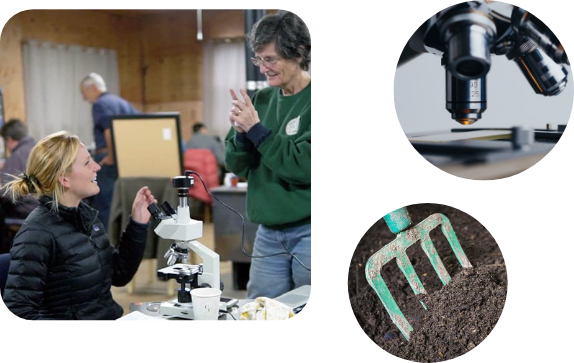
“Dr. Elaine’s™ Soil Food Web Approach provides an effective and viable means of rapidly regenerating health and fertility in agricultural soils, enabling farmers to operate more productively and profitability without the use of chemical inputs, thus protecting the world’s waterways, insect and animal populations. Restoring the Soil Food Web in agricultural soils also promotes the capture and sequestration of substantial levels of carbon from the atmosphere by returning it to our soils, providing the potential, if implemented on a global scale, to reduce atmospheric carbon to safe levels as identified by the IPCC.”
Dr. David Johnson – Research Scientist and Molecular Biologist, New Mexico State University
What's Included:
63 Lectures & Quizzes covering the science and theory behind the Soil Food Web Approach.
Foundation Course 1 - Introduction to the Soil Food Web

In Foundation Course 1 you will learn:
- About the damage that modern agriculture has done to soils all over the world.
- How Regenerative Agriculture is the soil-ution and how you can rapidly regenerate your soils with the Soil Food Web Approach.
- How the Soil Food Web Approach can be adopted on any scale and in almost any environment, with a multitude of crops.
- About the 4 major groups of Beneficial Microorganisms that are needed to restore ecosystem functions to your soil.
- How Beneficial Microbes work in harmony with your crops to nourish and protect them.
- How benefits such as increased yields, reduced erosion, reduced pest, disease and weed pressures etc. can be achieved.
- About several projects from around the world that Dr. Elaine Ingham has worked on personally.
- About some of the management practices you can adopt to ensure that the biology in your soils is not compromised.
- How soil structure is created by beneficial microbes, improving water infiltration in clay soils and better water retention in sandy soils. And how good structure enables plants and beneficial microbes to penetrate deep into the soil profile, improving plant health.
- How beneficial microbes access the abundance of nutrients stored in the parent material (think sand and clay particles) and how this is then made available to your plants.
- How plants influence the soil biome, by releasing sugary exudates that feed specific groups of beneficial microbes, in return for nutrients.
- How having a balanced soil biome can result in great benefits, such as Weed Suppression and Increased Carbon or Organic Matter content.
Foundation Course 2 - Making BioComplete™ Compost

In Foundation Course 2 you will learn:
- About the different definitions of compost and why we consider it as a means of multiplying beneficial microbes instead of just a way of delivering nutrients to the soil.
- How to make your own Biological Compost, using Dr. Elaine’s close-control composting method that enables beneficial microbes to multiply rapidly, while suppressing detrimental microbes.
- Techniques that can be used to balance the biology in your compost, ensuring that the 4 main groups of microbes are present.
- How to apply Biological Compost to your soils so that beneficial microbes can interact with your plants in the root zone, offering nutrition and protection.
- About the various types of methods and equipment that can be used to produce Biological Compost, depending on scale. This includes vermicompost and hot-composting.
Foundation Course 3 - Making BioComplete™ Extracts & Teas

In Foundation Course 3 you will learn:
- How to produce Biological Extracts and Teas from your Biological Compost, using different types of equipment depending on the scale you are operating at.
- About the uses and application methods of Biological Extracts and Teas
- How to apply Biological Liquid Amendments to your soils using different equipment, depending on the scale of your project. And how you can use conventional spraying equipment with some minor modifications.
Foundation Course 4 - Microscopy

In Foundation Course 4 you will learn:
- How to correctly set-up and use a compound microscope.
- About the biological morphology of the 4 major groups of beneficial soil microorganisms.
- How to identify and quantify the key groups of beneficial microbes that all soils need in order to be fully functional, using the compound microscope. This will enable you to conduct your own soil biology assessments.
- How to process and interpret data.
- How to recognize microarthropods, algae, pollen and other objects in your soil.
Introduction to Permaculture
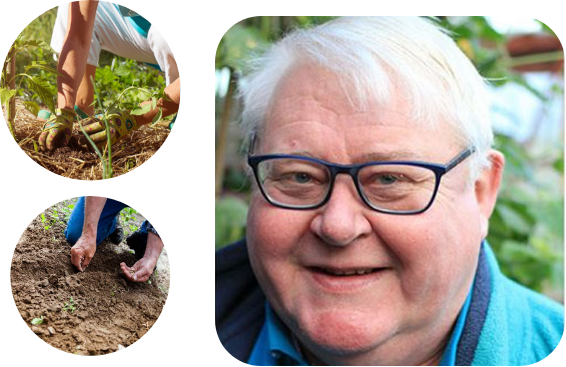
Graham is an internationally respected teacher, author and lecturer in Permaculture and other aligned disciplines over the last thirty years. He is the longest standing member of the UK Permaculture Association and Chair of the Educational Committee. He shares a home in the Scottish Borders with his wife Nancy, which boasts the longest-standing intentional food forest garden in Britain. Over a thousand visitors a year attest to the amazing productivity of this space.
What's Included:
Downloadable Course Materials
– 18 Lectures and Quizzes
– Downloadable Course Materials
– Certificate of Completion
– IPC Forum Access
What you’ll learn:
– 12 Principles of Permaculture
– Three ethics: Earth Care, People Care, Fair Shares
– Importance of Observation
– Design Sequences
– Why do trees matter and how do they work?
– The Answer Lies in the Soil
– Cycles of Intervention
– Zones, Sectors and Throughputs






